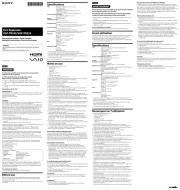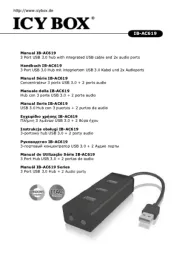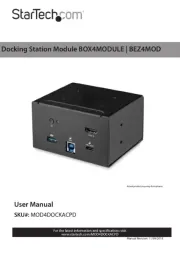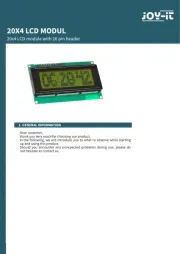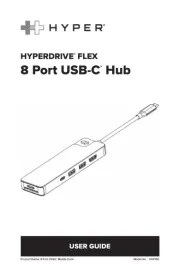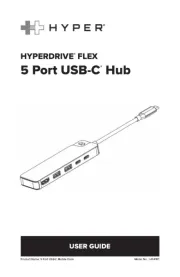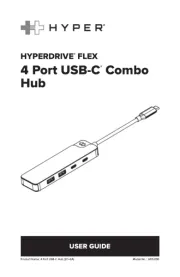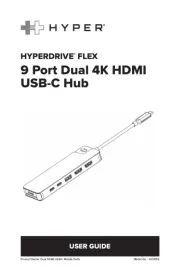Inserting Batteries into the Mouse
1Set the power switch located on the bottom of the
mouse to OFF.
2Open the battery compartment cover and insert the two
supplied IEC R6 (size AA) batteries with the correct + -
orientation.
Note
To prevent battery fluid leaks and damage, observe the following
precautions:
• Insert the batteries with the correct + - orientation.
• Do not charge dry cell batteries.
• Do not mix old and new batteries, or batteries of a different type.
• If the mouse has not been used for a long time, remove the batteries.
• If a battery fluid leak occurs, carefully wipe the battery compartment,
and insert new batteries.
• To prevent accidental operation, be careful not to press any buttons
when replacing the batteries.
3Close the battery compartment cover.
z
Under normal operating conditions, a set of alkaline batteries lasts about
three months. When cursor movement becomes sluggish and the
communication distance between the mouse and your personal computer
decreases, check the low battery lamp on the mouse. Replace the batteries if
the low battery lamp is flashing red.
When not using the mouse, set the power switch to OFF. This will make the
batteries last longer.
Replacing the batteries
The low battery lamp flashing red indicates that the battery life is running
low. Replace the batteries when this occurs.
Enabling Communication
between the Mouse and Your
Personal Computer
Use the Bluetooth software installed on your personal computer to enable
communication between the mouse and your personal computer.
Note
Make sure that the Bluetooth software on your personal computer is activated.
For details, refer to the manuals provided with your personal computer.
Before you start
Note
Operation of the Bluetooth software may vary depending on your personal
computer. For details on how to use the software, refer to the manuals provided
with your personal computer.
If your personal computer is pre-installed with Windows XP:
Go to “Case C.”
If your personal computer is pre-installed with Windows Vista:
Follow the steps below.
1Click (Start), then “Control Panel.”
2Click the “Hardware and Sound” icon.
3If the “Bluetooth Devices” icon is in the “Hardware and
Sound” window:
Go to step 4.
If the “Bluetooth Devices” icon is not in the “Hardware
and Sound” window:
Close the “Control Panel” and go to “Case C.”
4Click the “Bluetooth Devices” icon, and verify the
contents of the window displayed.
Note
If you switch to Classic View, double-click the “Bluetooth Devices” icon.
If the following “Bluetooth Devices” window is
displayed:
Go to “Case A.”
If the following “Bluetooth Devices” window is
displayed:
Close the “Control Panel” and go to “Case B.”
Case A
1Set the power switch located on the bottom of the
mouse to ON.
2On the “Bluetooth Devices” window, click the “Add
Wireless Device” icon.
3Press the CONNECT button on the bottom of the mouse.
The low battery lamp flashes green.
4In the device list, select “VGP-BMS55,” and click “Next.”
z
Depending on the usage environment, the “Pair with a Wireless
Device” window may appear. In this case, select “Pair without
using a code,” and click “Next.”
5On the “Pair with a Wireless Device” window, click
“close.”
6Close the “Bluetooth Devices” window.
7Try moving the mouse. If the pointer displayed on your
screen moves accordingly, the connection is complete.
English
WARNING
To prevent fire or shock hazard, do not expose the unit
to rain or moisture.
Owner’s Record
The model number and the serial number are located inside the battery
compartment of the mouse. Record the serial number in the space provided
below. Refer to this number whenever you call your Sony dealer regarding this
product.
Model No. VGP-BMS55
Serial No. ____________________
For customers in the U.S.A.
This equipment has been tested and found to comply with the limits for a Class B
digital device, pursuant to Part 15 of the FCC Rules. These limits are designed to
provide reasonable protection against harmful interference in a residential
installation. This equipment generates, uses, and can radiate radio frequency
energy and, if not installed and used in accordance with the instructions, may
cause harmful interference to radio communications. However, there is no
guarantee that interference will not occur in a particular installation. If this
equipment does cause harmful interference to radio or television reception, which
can be determined by turning the equipment off and on, the user is encouraged to
try to correct the interference by one or more of the following measures:
– Reorient or relocate the receiving antenna.
– Increase the separation between the equipment and receiver.
– Connect the equipment into an outlet on a circuit different from that to which
the receiver is connected.
– Consult the dealer or an experienced radio/TV technician for help.
You are cautioned that any changes or modifications not expressly approved in
this manual could void your authority to operate this equipment.
For questions regarding your product or for the Sony Service Center nearest you,
call 1-888-476-6972 in the United States or 1-800-961-7669 in Canada.
This device complies with Part 15 of the FCC Rules. Operation is subject to the
following two conditions: (1) this device may not cause harmful interference, and
(2) this device must accept any interference received, including interference that
may cause undesired operation.
For customers in Canada
This Class B digital apparatus complies with Canadian ICES-003.
Operation is subject to the following two conditions: (1) this device may not
cause harmful interference, and (2) this device must accept any interference
received, including interference that may cause undesired operation of the
device.
For customers in the U.S.A. and Canada
This equipment complies with FCC/IC radiation exposure limits set forth
for uncontrolled equipment and meets the FCC radio frequency (RF)
Exposure Guidelines in Supplement C to OET65 and RSS-102 of the IC
radio frequency (RF) Exposure rules. This equipment has very low levels of
RF energy that it deemed to comply without maximum permissive
exposure evaluation (MPE). But it is desirable that it should be installed and
operated with at least 20cm and more between the radiator and person’s
body (excluding extremities: hands, wrists, feet and ankles).
This device and its antenna(s) must not be co-located or operating with any
other antenna or transmitter except Grant condition.
Caution - The use of optical instruments with this product will increase eye
hazard.
Located at the bottom
For customers in other countries and regions
The equipment is classified as a CLASS 1 LASER PRODUCT and complies
with the Laser Products Safety Standard IEC/EN 60825-1. You can find the
following sticker on the bottom of this equipment.
• VAIO is a trademark of Sony Corporation.
• Microsoft, Windows, and Windows Vista are registered trademarks of
Microsoft Corporation in the United States and/or other countries.
• The Bluetooth word mark and logos are owned by the Bluetooth SIG, Inc., and
any use of such marks by Sony Corporation is under license. Other
trademarks and Trade names are those of their respective owners.
• All other names of systems, products, and services are trademarks of their
respective owners. In this manual, the ™ or ® marks are not specified.
• In this manual, Microsoft® Windows® XP Home Edition and Microsoft®
Windows® XP Professional are referred to as Windows XP.
• In this manual, Windows Vista® Home Basic, Windows Vista® Home
Premium, Windows Vista® Business and Windows Vista® Ultimate are
referred to as Windows Vista.
Before Use
This product is a laser mouse equipped with Bluetooth* technology.
The Bluetooth Laser Mouse can be used with the following personal
computers (as of August 2008):
• Sony VAIO personal computers equipped with Bluetooth technology and
pre-installed with Windows XP (after SP2) or Windows Vista (after SP1).
* Bluetooth technology
Bluetooth wireless technology provides instant short-range connectivity
without the need for cumbersome cabling. For details, refer to the
manuals included with your personal computer.
Note
Depending on the personal computer or version of software you are using, the
mouse may not operate correctly.
Consult your nearest Sony dealer about proper operating environments and
information about Sony VAIO and Bluetooth compatibility.
Part names
Case B
1Set the power switch located on the bottom of the
mouse to ON.
2On the “Bluetooth Devices” window, select the
“Devices” tab and click “Add.”
The “Add Bluetooth Device Wizard” appears.
3Press the CONNECT button on the bottom of the mouse.
The low battery lamp flashes green.
4Select the “My device is set up and ready to be found”
check box and click “Next.”
5In the device list, select “VGP-BMS55”, and click “Next.”
6Select “Don’t use a passkey” and click “Next.”
7Click “Finish.”
8Click “OK.”
9Try moving the mouse. If the pointer displayed on your
screen moves accordingly, the connection is complete.
Case C
1Set the power switch located on the bottom of the
mouse to ON.
2Double-click the icon in the notification area in the
bottom right corner of your personal computer’s
desktop.
The “Bluetooth Settings” screen appears.
3Click “New Connection.”
The “Add New Connection” wizard screen appears.
4Press the CONNECT button on the bottom of the mouse.
The low battery lamp flashes green.
5Select “Express Mode”, and click “Next.”
The search for Bluetooth devices begins.
6In the device list, select “VGP-BMS55”, and click “Next.”
7If the “Add New Connection” wizard disappears,
connection is complete. Go to step 10.
8If the prompt to connect the HID (Human Interface
Device) device appears, click “OK.”
9Verify the contents of the window displayed, and click
“Next.”
10 Try moving the mouse. If the pointer displayed on your
screen moves accordingly, the connection is complete.
Disconnecting
Set the power switch of the mouse to OFF.
Operating distance of the mouse
The mouse can normally be operated within about a 32 ft. (10 m) radius around
the personal computer. Depending on the usage environment, sometimes the
usable distance may be notably shorter, preventing normal operation.
In such a case, take the following measures:
• Use the mouse as far away from other wireless devices as possible.
• Use the mouse closer to the personal computer.
• Use a mouse pad.
Using the Mouse
When you move the mouse, the pointer displayed on your screen moves in
the same direction. This section describes basic mouse operations.
Notes
• Due to the characteristics of the laser sensor, the mouse may not work
properly on transparent surfaces or on a mouse pad that has a clear surface.
Avoid using on such materials, or use a commercially available mouse pad
that is compatible with a laser sensor mouse.
• The fluoropolymer used for the soles of the mouse (PTFE, or
polytetrafluoroethylene) is designed for low frictional resistance, but the
mouse may slide differently depending on what material your desk or
mousepad is made of.
z
If necessary, you can adjust the mouse pointer speed under “Mouse Properties”. To
display “Mouse Properties”, with the Windows Vista operating system, double-
click “Mouse” in the “Control Panel” (with the Windows XP operating system,
select “Printers and Other Hardware” in the “Control Panel”, then select “Mouse”).
Basic operations
See the “Name of Parts” section for the location of the buttons.
1Wheel button
Use the wheel button to easily scroll up and down in a window. You can
also use auto scroll by pressing the wheel button.
2Left button
Use to open saved documents, pictures and other files and to run programs.
Most mouse functions are performed using this button.
3Right button
Use this button to display shortcut menus that allow you to copy saved
documents, pictures and other files, view file details, and access various
commands and settings.
Precautions
Safety If any solid object or liquid falls onto the mouse, disconnect
it and have it checked by qualified personnel before
continuing its use.
Location Do not place the mouse in a location where it is:
• On an unstable surface
• In very humid areas or where there is no ventilation
• Subject to excessive dust
• Subject to direct sunlight or extreme heat
• Extremely cold
Operation If the mouse is brought directly from a cold to a warm
location or is placed in a very damp room, moisture may
condense on the inside of the mouse. If this occurs, the
mouse may not work properly.
In this case, wait about 30 minutes for the moisture to
evaporate. If the mouse does not work properly after one
hour, consult your nearest Sony dealer.
Bluetooth communications
• The 2.4 GHz band used by Bluetooth and wireless LAN devices is also
used by various other devices. Bluetooth devices incorporate technology
that minimizes interference from other devices using the same
wavelength. However, communication speed and achievable distances
may be reduced. Interference from other devices can also stop
communications altogether.
• The data transfer rate will vary depending on distance and obstacles
between devices, device configuration, radio interference, operating
system, software application, and so on. In some cases, communication
may be interrupted.
• Communication range will vary according to whether walls or other
obstacles are located between devices, the material used in walls, the
presence of radio frequency interference and other environmental
conditions, and the type of software being used.
• If wireless LAN and Bluetooth functionality are used at the same time on
the same personal computer, communication speed may be reduced due
to electromagnetic interference, and other unwanted effects may occur.
Cleaning the outside of the mouse
Clean the mouse with a soft, dry cloth or a soft cloth lightly moistened with
a mild detergent solution. Do not use any type of abrasive pad, scouring
powder, or solvent such as alcohol or benzine.
Specifications
Communication method Bluetooth Standard Ver. 2.0+EDR
Position tracking principle Laser sensor
Resolution 800 counts per inch
Frequency band RF 2.4 GHz (Bluetooth)
Power requirements 3 V DC (two alkaline IEC R6 [size AA]
batteries)
Transmission distance 32 ft. (10 m) max. line of sight*1
Dimensions Approx. 2.3 × 1.4 × 4.8 in.
(56.4 × 34.1 × 121.7 mm) (w × h × d)
Mass Approx. 3.9 oz. (110 g) (including batteries)
Supported models Sony VAIO personal computers with the
Windows XP or Windows Vista operating
system
Operating temperature 41°F to 95°F (5°C to 35°C)
(temperature gradient less than 18°F (10°C)/
hour)
Operating humidity 20% to 80% (not condensed), provided that
humidity is less than 65% at 95°F (35°C)
(hygrometer reading of less than 84°F (29°C))
Bluetooth® Laser Mouse
VGP-BMS55
Operating Instructions
Mode d’emploi
© 2008 Sony Corporation / Printed in Japan
4-116-130- (1)11
Storage temperature –4°F to 140°F (–20°C to 60°C)
(temperature gradient less than 18°F (10°C)/
hour)
Storage humidity 10% to 90% (not condensed), provided that
humidity is less than 20% at 140°F (60°C)
(hygrometer reading of less than 95°F (35°C)
Accessories Alkaline IEC R6 (size AA) batteries (2)
Operating Instructions (this document) (1)
Warranty Card (1)
*1Communication range will vary according to whether walls or other
obstacles are located between devices, the material used in walls, the
presence of radio frequency interference and other environmental
conditions, and the type of software being used.
Design and specifications are subject to change without notice.
Troubleshooting
If you experience any of the following difficulties while using the mouse,
use this troubleshooting guide to solve the problem. If a problem persists,
consult your nearest Sony dealer.
The mouse does not turn on when I set the power switch to ON.
❒Other mouse buttons are being pressed while the power switch is set to
ON.
cIf the power switch is set to ON while other mouse buttons are being
pressed, the mouse will not turn on. Be sure not to press any other
buttons when setting the power switch to ON.
Nothing happens when I press a mouse button.
❒The software is not compatible.
cUse a supported software.
❒The mouse batteries are exhausted.
cReplace the batteries. For details, see “Inserting Batteries into the Mouse”.
❒The mouse and the personal computer are not communicating.
c Perform the steps in “Enabling Communication between the Mouse and
Your Personal Computer” to ensure that proper communication is
possible.
cTurn off the mouse, wait a few seconds, turn on the mouse, and then
reestablish communication.
c In some operating environments, the usable distance may be notably
shorter, preventing normal operation. In such case, use the mouse farther
away from other electronic devices such as other computers and displays.
c If the mouse is too far from your personal computer, communication is
not possible. Bring the mouse and your personal computer closer
together.
❒The mouse is being used on an unsuitable surface.
c Due to the characteristics of the laser sensor, the mouse may not work
properly on transparent surfaces or on a mouse pad that has a clear
surface. Avoid using on such materials, or use a commercially available
mouse pad that is compatible with a laser sensor mouse.
❒The CONNECT button is pressed while operating the mouse.
c When the CONNECT button is pressed while operating the mouse, the
mouse goes into a standby state for about 1 minute and cannot be
operated during this time. If you press the CONNECT button, reset the
power switch of the mouse once to ON before beginning operation.
❒The mouse may have difficulty communicating in an environment with
2.4 GHz wireless LAN or other Bluetooth communication.
c It is best to use the mouse in a location with low interference from
wireless devices.
Pressing the CONNECT button does not establish a connection.
cCheck whether batteries are inserted in the mouse. For details, see
“Inserting Batteries into the Mouse”.
cIf the power switch on the mouse is set to OFF, communication with
the personal computer is not possible. Check the power switch setting
on the bottom of the mouse.
cIf the power does not come on when the power switch is set to ON, the
batteries may be exhausted. Under normal operating conditions, a set
of alkaline batteries lasts about three months. Replace the batteries. For
details, see “Inserting Batteries into the Mouse”.
cCommunication between the mouse and your personal computer may
not have been properly established. If the CONNECT button on the
mouse is not pressed within 30 seconds after the Bluetooth device
search begins, mouse communication is canceled. In such a case,
perform the procedure again to enable communication. For details, see
“Enabling Communication between the Mouse and Your Personal
Computer”.
cIf the mouse and personal computer are too far apart, communication
is not possible. The maximum communication distance between the
mouse and personal computer is about 32 ft. (10m). If used on a metal
table or if obstacles lie between the mouse and personal computer, the
usable distance may be less.
cMake sure that the Bluetooth function on your computer is activated.
For details, refer to the manuals provided with your personal
computer.
The scrolling features do not work.
❒The operating system is not compatible.
cUse a supported operating system.
❒The program you are using is not compatible with the scrolling
features.
cThe scrolling features only work with programs that use a scroll function.
cSome programs do not support the scrolling features.
The pointer does not move when I move the mouse.
cProcessing performed by Windows or other software may temporarily
disable the mouse. Wait a few moments for the processing to finish
before using the mouse.
cYou may find some useful solutions in your personal computer’s
operating instructions. Refer to the manuals provided with your
personal computer.
❒The mouse batteries are exhausted.
cIf the power does not come on when the power switch is set to ON,
replace the batteries. For details, see “Inserting Batteries into the Mouse”.
❒The mouse is not set to ON.
c Set the power switch on the bottom of the mouse to ON.
❒The mouse and your personal computer are not communicating.
c Perform the steps in “Enabling Communication between the Mouse and
Your Personal Computer” to ensure that proper communication is
possible.
c In some operating environments, the usable distance may be notably
shorter, preventing normal operation. In such case, use the mouse farther
away from other electronic devices such as other computers and displays.
c If the mouse is too far from your personal computer, communication is
not possible. Bring the mouse and your personal computer closer
together.
❒The mouse is being used on an unsuitable surface.
cDue to the characteristics of the laser sensor, the mouse may not work
properly on transparent surfaces or on a mouse pad that has a clear
surface. Avoid using on such materials, or use a commercially-available
mouse pad that is compatible with a laser sensor mouse.
When I am using the mouse, the display goes dark or the personal
computer enters power-saving mode.
❒The personal computer enters power-saving mode even while the
mouse is in use.
cChange the power management settings for the personal computer to
prevent it from entering power-saving mode. For details, refer to the
manuals provided with your personal computer.
cTouch the touchpad or press any key on the keyboard to exit power-
saving mode.
The personal computer does not return from Standby mode.
cTouch the touchpad or press any key on the keyboard to exit this mode.
The mouse pointer does not move smoothly across the screen.
cDue to the characteristics of the laser sensor, the mouse may not work
properly on transparent surfaces or on a mouse pad that has a clear
surface. Avoid using on such materials, or use a commercially-available
mouse pad that is compatible with a laser sensor mouse.
Exiting power-saving mode with the mouse is not possible.
cPress any key or the power button on the keyboard.
The mouse does not move smoothly after returning from the power-
saving mode.
cDeactivate the Bluetooth connection, wait a few seconds, and then
reestablish connection.
The mouse is not found when the Bluetooth device search is
performed.
❒The mouse is unable to be detected.
cPress the CONNECT button located on the bottom of the mouse, and
then try the search again.
❒The power switch on the mouse is set to OFF.
cCheck the power switch setting on the bottom of the mouse.
❒The Bluetooth function on your computer is not activated.
cMake sure that the Bluetooth function is activated. For details, refer to the
manuals provided with your personal computer.
I am asked to input a key at the time of authentication.
cInput “0000” as the key.
Printed on 70% or more recycled paper using VOC (Volatile
Organic Compound)-free vegetable oil based ink.
Imprimé sur papier recyclé à 70% ou plus avec de l’encre à
base d’huile végétale sans COV (composés organiques volatils).
Low battery lampLeft button
CONNECT button
Power switch
Right button
Wheel button
Lens
